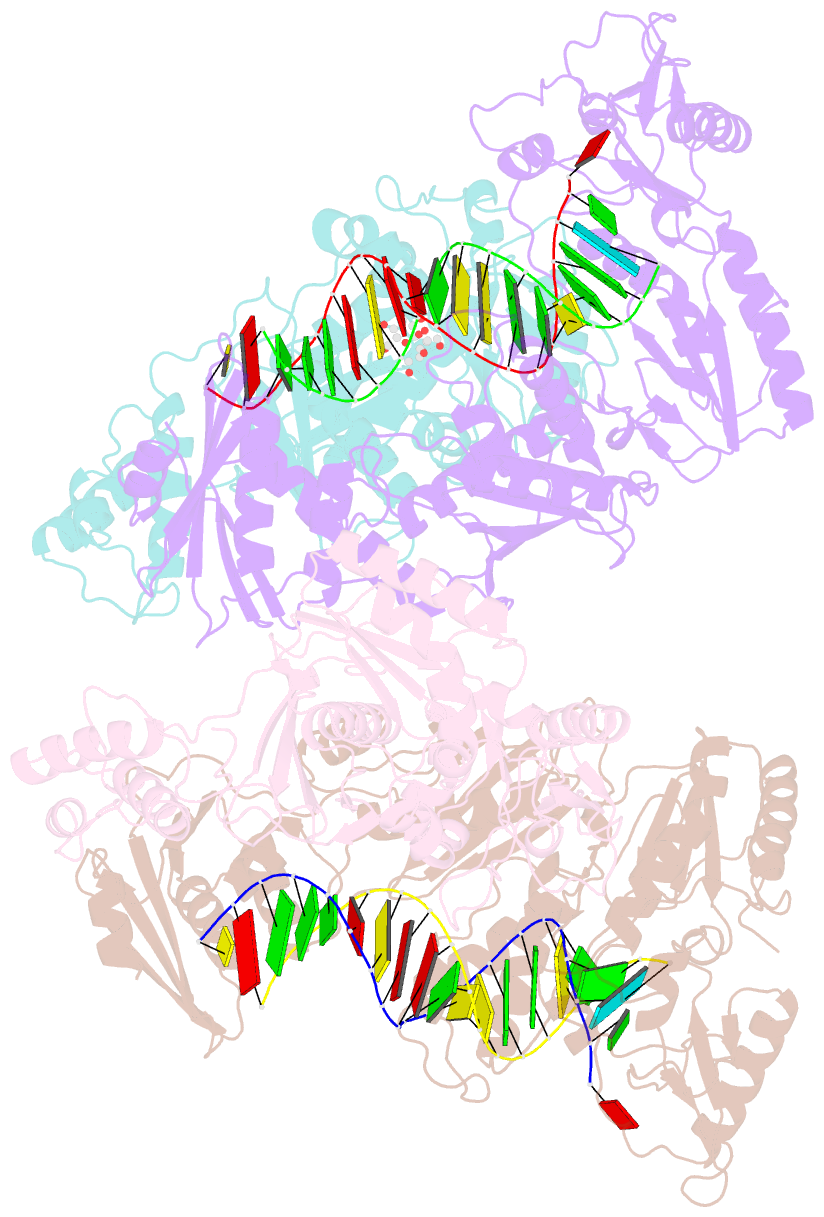Summary information and primary citation
- PDB-id
- 6hak; SNAP-derived features in text and JSON formats;
DNAproDB
- Class
- transcription
- Method
- X-ray (3.95 Å)
- Summary
- Crystal structure of hiv-1 reverse transcriptase (rt) in complex with a double stranded RNA represents the rt transcription initiation complex prior to nucleotide incorporation
- Reference
- Das K, Martinez SE, DeStefano JJ, Arnold E (2019): "Structure of HIV-1 RT/dsRNA initiation complex prior to nucleotide incorporation." Proc.Natl.Acad.Sci.USA, 116, 7308-7313. doi: 10.1073/pnas.1814170116.
- Abstract
- The initiation phase of HIV reverse transcription has features that are distinct from its elongation phase. The first structure of a reverse transcription initiation complex (RTIC) that trapped the complex after incorporation of one ddCMP nucleotide was published recently [Larsen KP, et al. (2018) Nature 557:118-122]. Here we report a crystal structure of a catalytically active HIV-1 RT/dsRNA complex that mimics the state of the RTIC before the first nucleotide incorporation. The structure reveals that the dsRNA-bound conformation of RT is closer to that of RT bound to a nonnucleoside RT inhibitor (NNRTI) and dsDNA; a hyperextended thumb conformation helps to accommodate the relatively wide dsRNA duplex. The RNA primer 3' end is positioned 5 Å away from the polymerase site; however, unlike in an NNRTI-bound state in which structural elements of RT restrict the movement of the primer, the primer terminus of dsRNA is not blocked from reaching the active site of RT. The observed structural changes and energetic cost of bringing the primer 3' end to the priming site are hypothesized to explain the slower nucleotide incorporation rate of the RTIC. An unusual crystal lattice interaction of dsRNA with its symmetry mate is reminiscent of the RNA architecture within the extended vRNA-tRNALys3 in the RTIC. This RT/dsRNA complex captures the key structural characteristics and components of the RTIC, including the RT conformational changes and interactions with the dsRNA primer-binding site region, and these features have implications for better understanding of RT initiation.





